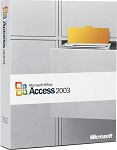 New Features for Total Access Analyzer Version X.7 for
Microsoft Access 2003, 2002, and 2000
New Features for Total Access Analyzer Version X.7 for
Microsoft Access 2003, 2002, and 2000
This is no longer the latest version of Total Access Analyzer 2003, 2002 and 2000.
Existing X.7 customers can upgrade for a nominal fee. For more information
on the new features, visit Version 11.95 for Total Access Analyzer 2003
and Version X.8 for Total
Access Analyzer 2002 and 2000.
Version X.7 Summary
The X.7 versions of Total Access Analyzer includes many new features and enhancements to help you create and maintain Microsoft Access databases better than ever! These new versions are now available:
| Access Version | New Version | Previous Version |
| Access 2003 | 11.7 | 11.0 |
| Access 2002/XP | 10.7 | 10.5 |
| Access 2000 | 9.7 | 9.5 |
For more information on Total Access Analyzer, Version X.5 for Access 2000 and 2002, visit Features and Enhancements in Version X.5.
- During module documentation, the VBA IDE no longer flashes on the screen.
- Faster performance
- All reported issues and errors for previous versions are resolved.
- When selecting tables for documentation, a new feature allows you to filter the table list by System tables or Regular tables.
- The documentation is optimized to run more efficiently than ever.
- A new "Suggestion Box" link on the Main Menu allows you to send product suggestions directly to our development team.
- Documents only the Access options that apply to the database type: MDB or ADP.
- Documentation can run on databases that are not complied, although module cross referencing may be incomplete for these databases.
- Blueprint reports for form and report layouts are now available for databases that are in Access 2002-2003 format. Previously, an Access/Jet bug prevented us form generating these blueprint reports.
- Improved documentation of form and report controls, and their associated labels.
- Documentation of Hyperlink and Subhyperlink addresses is enhanced.
- Issue Filter form displays only issues that exist in the current documentation results.
- Improved documentation of CommandBar controls.
- After documentation is complete, the Documentation Summary form displays a count of issues by object type.
- Two new reports are available to show Relationships and support filtering.
- Two new reports show controls with their associated labels.
- Two new reports show table field lists in Landscape mode to better display long table names, field names, and field descriptions.
- Module XRef reports with Functions now displays control and property information.
- The Blueprint Detail report displays the source object name for subform/subreport controls.
- Two new reports for Table Fields, Sorted by Data Type. One with the summary of fields by data type and size, and the other showing the details of fields of every data type and size.
- Report references to broken hyperlinks.
- Procedure names that conflict with reserved words.
- Combo boxes on tables and forms that display the default number of 8 rows. Displaying more rows allows users to see more items at one time.
- Suggestions for improving primary key fields:
- Tables with primary keys not in the first set of fields.
- Tables with more than one field as their primary key.
- Tables that use non-numeric fields as their primary key.
- For MDBs, tables that do not use autonumber field as their primary key.
- For ADPs, tables that do not use Identity fields as their primary key.
- Modules without Option Compare specified
- Form and report RecordSources that should be a saved query.
- Action queries that maintain a transaction log.
- Tables linked to old Access database formats.
- The use of the slow Domain functions in forms, macros, and reports. Previously, it only documented their use in modules and queries.
- Invisible labels and labels with hyperlinks no longer trigger the suggestion to be associated with a control.
- Suggestions regarding conflicts with Jet and SQL Server Tables are no longer detected for system tables.
- Improved detection of unused Enums and Enum elements.
- While viewing issues in the Documentation Explorer, new shortcut (Alt+D) allows you to quickly view the object in design view. This makes it even easier to investigate and fix the issues that Total Access Analyzer finds
- Boolean property values are displayed as Yes/No instead of as -1/0.
- Macros can be opened in design view in international versions of Access.
- On the Report Options form, a new feature allows you to reset all options to their default values.
- The Hyperlink report (under Object XRef) now contains a check box to show code references to a hyperlink address thatís a variable or constant.
Microsoft Access 2019 / 365 Version is shipping!
Version 16.7 for
Microsoft Access 2016
Version 15.7 for
Microsoft Access 2013
Version 14.7 for
Microsoft Access 2010
Version 12.97 for
Microsoft Access 2007
Version 11.95 for
Microsoft Access 2003
Version 10.8 and 9.8 for
Access 2002 and 2000
Awards and Reviews
"Total Access Analyzer is an amazing product that I've relied on and recommended for years. It's a huge time saver."
Sal Ricciardi, Programming Writer, Microsoft Corporation
Analyzer Info
Why Analyzer?
Additional Info
















